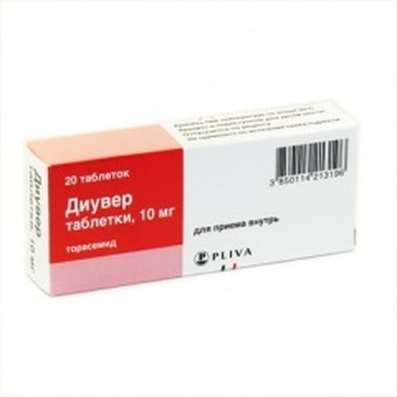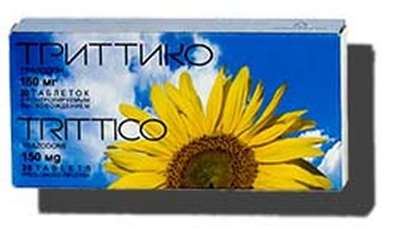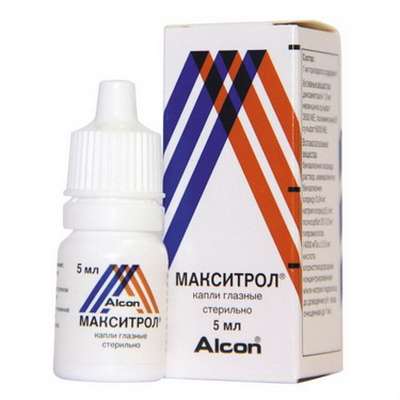Instruction for use: Tetracaine
I want this, give me price
Latin name: Tetracainum (genus. Tetracaini)
Chemical name
4- (Butylamino) benzoic acid 2- (dimethylamino) ethyl ester (and as the hydrochloride)
Gross formula
C15H24N2O2
Pharmacological group:
Local Anesthetics
The nosological classification (ICD-10)
Z01.0 Examination of eyes and eyesight: Angioscopy of the vascular fundus of the fundus; Angioscopy of the iris; Diagnostic scrapings of the conjunctiva; Ultrasound of the eye; Pupil dilated
Z01.1 Examination of ears and hearing: Otoscopy
Z100.0 * Anesthesiology and premedication: Abdominal surgery; Adenomectomy; Amputation; Angioplasty of the coronary arteries; Carotid artery angioplasty; Antiseptic treatment of skin in wounds; Antiseptic treatment of hands; Appendectomy; Atheroctomy; Balloon coronary angioplasty; Vaginal hysterectomy; Venous bypass; Interventions on the vagina and cervix; Interventions on the bladder; Interference in the oral cavity; Reconstructive-reconstructive operations; Hand hygiene of medical personnel; Gynecological Surgery; Gynecological interventions; Gynecological operations; Hypovolemic shock during surgery; Disinfection of purulent wounds; Disinfection of the edges of wounds; Diagnostic Interventions; Diagnostic procedures; Diathermocoagulation of the cervix; Long-term surgeries; Replacement of fistulous catheters; Infection in orthopedic surgical interventions; Artificial heart valve; Kistectomy; Short-term outpatient surgery; Short-term operations; Short-term surgical procedures; Cryotyreotomy; Blood loss during surgical interventions; Bleeding during surgery and in the postoperative period; Laser coagulation Laserocoagulation; Laser retinopathy of the retina; Laparoscopy; Laparoscopy in gynecology; Likvornaya fistula; Small gynecological operations; Small surgical interventions; Mastectomy and subsequent plastic surgery; Mediastinotomy; Microsurgical operations on the ear; Mukinging operations; Suturing; Minor surgery; Neurosurgical operation; Eclipse of the eyeball in ophthalmic surgery; Orchiectomy; Pancreatectomy; Pericardectomy; The rehabilitation period after surgical operations; Reconvalence after surgical intervention; Percutaneous transluminal coronary angioplasty; Pleural Thoracocentesis; Pneumonia postoperative and post traumatic; Preparing for surgical procedures; Preparing for a surgical operation; Preparation of the surgeon's arms before surgery; Preparation of the colon for surgical interventions; Postoperative aspiration pneumonia in neurosurgical and thoracic operations; Postoperative nausea; Postoperative hemorrhage; Postoperative granuloma; Postoperative shock; Early postoperative period; Myocardial revascularization; Resection of the apex of the tooth root; Resection of the stomach; Bowel resection; Resection of the uterus; Liver resection; Small bowel resection; Resection of a part of the stomach; Reocclusion of the operated vessel; Gluing of tissues during surgical interventions; Suture removal; Condition after eye surgery; Condition after surgery in the nasal cavity; Condition after gastrectomy; Condition after resection of the small intestine; Condition after tonsillectomy; Condition after removal of duodenum; Condition after phlebectomy; Vascular Surgery; Splenectomy; Sterilization of surgical instrument; Sterilization of surgical instruments; Sternotomy; Dental surgery; Dental intervention on periodontal tissues; Strumectomy; Tonsillectomy; Thoracic surgery; Total gastrectomy; Transdermal intravascular coronary angioplasty; Transurethral resection; Turbinectomy; Removal of a tooth; Cataract removal; Removing Cysts; Removal of tonsils; Removal of myoma; Removal of mobile milk teeth; Removal of polyps; Removal of a broken tooth; Removal of the uterus; Removal of seams; Urethrotomy; Fistula of the luminal ducts; Frontoetmoidogamotomy; Surgical infection; Surgical treatment of chronic ulcers of extremities; Surgery; Surgery in the anus; Surgery on the large intestine; Surgical practice; Surgical procedure; Surgical interventions; Surgical interventions on the digestive tract; Surgical interventions on the urinary tract; Surgical interventions on the urinary system; Surgical interventions on the genitourinary system; Surgical intervention on the heart; Surgical procedures; Surgical operations; Surgical operations on veins; Surgical intervention; Vascular Surgery; Surgical treatment of thromboses; Cholecystectomy; Partial resection of the stomach; Extraperitoneal hysterectomy; Percutaneous transluminal coronary angioplasty; Percutaneous transluminal angioplasty; Coronary artery bypass grafting; Extirpation of the tooth; Extirpation of infant teeth; Extirpation of pulp; Extracorporeal circulation; Extraction of the tooth; Extraction of teeth; Extraction of cataracts; Electrocoagulation; Endourological interventions; Episiotomy; Ethmoidotomy; Complications after tooth extraction
Z40 Preventive Surgery: Inhalational Anesthesia; Intratracheal Intubation; Intubation of the trachea; Surface anesthesia in ophthalmology
CAS code
94-24-6
Characteristics of the substance Tetracaine
Locally anesthetizing agent from the group of esters. Tetracaine hydrochloride is a white crystalline powder, odorless. Easily soluble in water (1:10), alcohol (1: 6), physiological solution and dextrose solution, hardly soluble in chloroform, practically insoluble in ether. pKa = 8.2. Molecular weight 300.83.
Pharmacology
Pharmacological action - local anesthetic.
It blocks sensitive nerve endings and conductors; penetrates the membrane of nerve cells, disrupts the transmembrane transport of ions (especially sodium), reduces the flow of impulses in the CNS.
When applied to the mucous membrane of the eye does not affect intraocular pressure and accommodation, does not dilate the pupils. Expands blood vessels (it is advisable to combine with adrenaline or other adrenomimetics). Anesthesia develops 2-5 min after instillation and lasts 15-20 min.
It is easily and completely absorbed through the mucous membranes (the rate of absorption depends on the site of administration and the dose). Because of the high rate of absorption, it can not be used for damage to the mucous membranes. Binding to plasma proteins is high. Completely hydrolyzed within 1-2 h by cholinesterase with the formation of PABA and diethylaminoethanol. It is excreted by the kidneys and with bile, partially subjected to hepatic intestinal recirculation.
In surgery, tetracaine is used only for subarachnoid (spinal) anesthesia (SUBA) in the presence of contraindications to the use of amide local anesthetics. The duration of action is from 180 minutes (0.5% hyperbaric solution obtained by diluting 1% tetracaine solution with 10% glucose solution in equal volumes) to 270 min (0.5% hypobaric solution obtained by diluting 1% tetracaine solution with distilled water for injections in equal amounts). When diluting 1% tetracaine solution with 0.9% sodium chloride solution or CSF liquor, an isobaric solution is obtained.
Application of the substance Tetracaine
Surface anesthesia with short-term operations and manipulations in ophthalmic (removal of surface foreign bodies, outpatient surgical interventions, gonioscopy, tonometry, other diagnostic procedures) and otorhinolaryngological practice; SUBA in case of contraindications to the use of amide local anesthetics.
Contraindications
Hypersensitivity (including to other local anesthetics of the group of esters or PABC and its derivative), damage or inflammation of the mucous membranes, incl. damage to the epithelium or erosion of the cornea, children's age (up to 10 years).
Application in pregnancy and lactation
Perhaps in exceptional cases, if the expected effect of therapy exceeds the potential risk to the fetus and newborn.
The action category for fetus by FDA is C.
Side effects of the substance Tetracaine
Local effects: irritation of the mucous membrane, allergic contact dermatitis, burning sensation, swelling and pain in the application area; with prolonged use in ophthalmology - keratitis, persistent opacity of the cornea, scar formation on the cornea with loss of visual acuity, slowing of epithelialization.
Systemic side effects: cyanosis, CNS excitation, visual impairment, arrhythmia, anaphylactic shock.
Interaction
Reduces the antibacterial activity of sulfanilamide preparations. Vasoconstrictors prolong the effect and reduce toxicity. Drugs that inhibit cholinesterase (antimiasthenic drugs, cyclophosphamide, thiotepa, etc.), reduce the metabolism of tetracaine and increase its toxicity. Anticoagulants (dalteparin sodium, enoxaparin sodium, heparin sodium, warfarin) increase the risk of bleeding. When using tetracaine with drugs that inhibit MAO (furazolidone, procarbazine, selegiline), the risk of lowering blood pressure increases. Tetracaine enhances and lengthens the effect of muscle relaxant drugs. Beta-adrenoblockers slow down the metabolism of tetracaine, increasing its toxicity (decreased hepatic blood flow).
Overdose
Symptoms: dizziness, general weakness, agitation, anxiety, muscle tremor, convulsions, respiratory failure, collapse, methaemoglobinaemia, nausea, vomiting, coma, AV blockade.
Treatment: removal from the skin and mucous membranes; with respiratory depression - ventilation and oxygen therapy, with collapse - IV the introduction of blood substitutes (saline solutions, Hemodez, dextran preparations), the use of vasoconstrictors, with convulsions - diazepam or short-acting barbiturates (iv), with methemoglobinemia 1-2 mg / kg methylthioninium chloride (Methylene blue) IV or 100-200 mg ascorbic acid inside.
Routes of administration
Locally.
Precautions for the substance Tetracaine
In ophthalmology it is not recommended to apply for a long time or often (corneal damage is possible). It should be borne in mind that solutions containing more than 2% of tetracaine can cause damage to the corneal epithelium and a significant widening of the conjunctival vessels.
Caution is used in patients with reduced cholinesterase level in blood plasma, heart rhythm disturbances, AV blockade, shock. Spinal anesthesia requires monitoring of blood pressure.
Special instructions
Instruments and syringes in contact with tetracaine should not contain alkali residues (an insoluble base is formed).

 Cart
Cart





